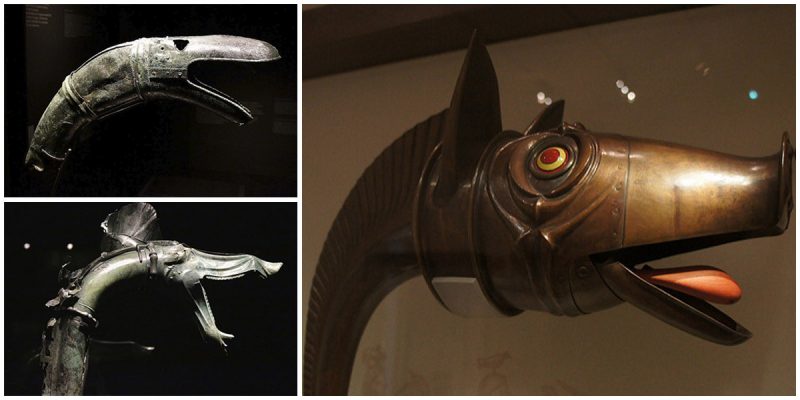A wonderful example of Iron Age Celtic art, the carnyx (from a Gaulish word meaning a long piece of wood or bone) is most commonly depicted as an instrument that accompanied Celtic warriors in battle. It may be described as a type of long and curved war trumpet, probably used to incite warriors and scare opponents.
The name is known from textual sources, and these instruments are described as being present at the Celtic attack on Delphi in 279 BC, as well as from Julius Caesar’s conquest of Gaul and Claudius’ invasion of Britain. Apart from literary sources, references to the instrument have also been found on pieces of art and coins.
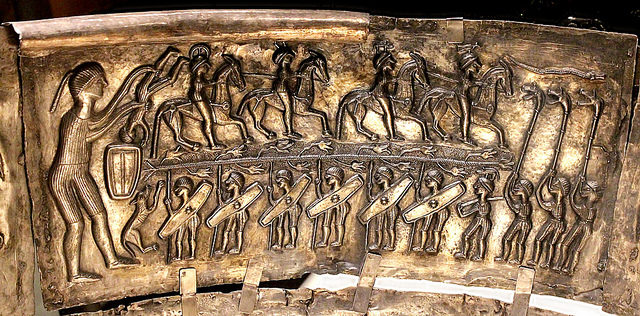
Between 300 BC and 200 AD, the carnyx was used in many parts of Europe, but the only example from the British Isles is the Deskford Carnyx, which was found around 1816 in Scotland, at the farm of Leichestown. This piece was made mostly of brass, a metal used almost exclusively by the Romans, and strictly controlled by them. That, along with other evidence, suggests that the instrument was forged between 80 and 250 AD.
The carnyx was held vertically and its significant height allowed it to be heard over the heads of the warriors. Its primary purpose was to increase the level of noise and confusion on the battlefield.
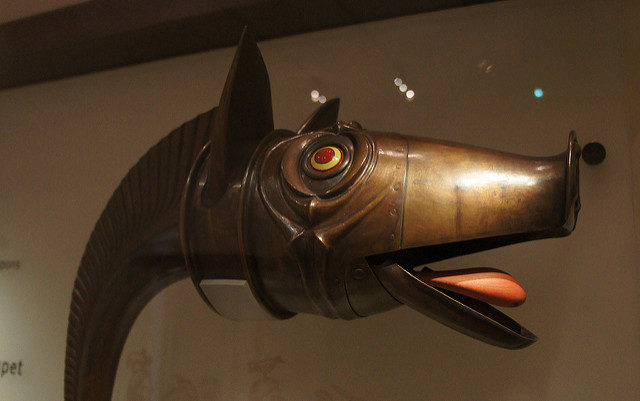
The “head” of the instrument is usually shaped like that of an animal—typically a horse or wild animal, such as a boar or wolf. This particular instrument is shaped to resemble a wild boar, and originally would have had a crest, ears, enameled eyes, and a wooden tongue that moved up and down when the carnyx was played, making it even louder. It is believed that the instrument was not only used in warfare but also had a ceremonial use; it may have been played at ceremonies such as weddings, feasts, or funerals.
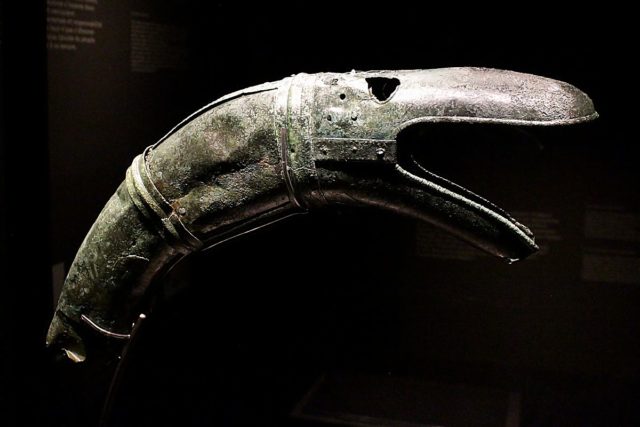
Although only the head of the Deskford Carnyx survives, it provided enough information for a replica to be made. Using materials and techniques as close as possible to the original, the silversmith John Creed made two reconstructions of the instrument. One of those is on display at the National Museum of Scotland in Edinburgh, while the other is kept by Carnyx & Co. and used for lectures and research. Similar trumpets have been found in Denmark and northern Europe and are often seen in Celtic art like the Gundestrup Cauldron.
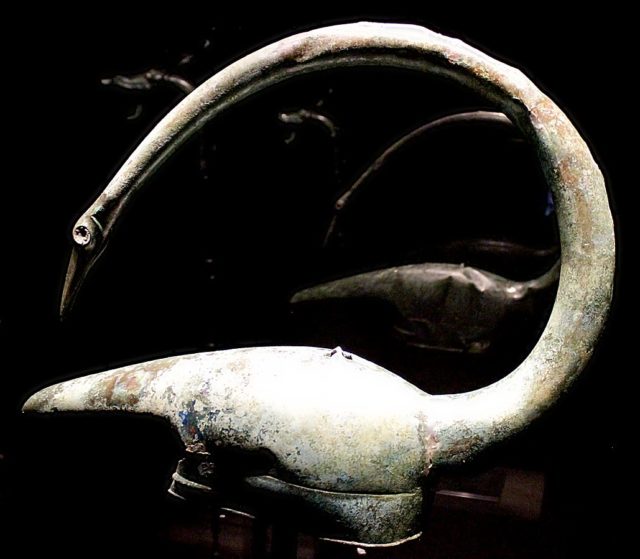
Prior to 2004, fragments of only five such instruments had been preserved, from Germany, Switzerland, France, Scotland, and Romania, but in November 2004 archaeologists discovered more than 500 fragments of unique military and religious objects in a Gallo-Roman site at Tintignac, in southern France. These objects, all made of iron and bronze, included 10 helmets, a dozen swords and scabbards, iron spearheads, a shield, two animal heads, one foreleg, a cauldron, and seven carnyces. Once one of the carnyces was restored, it proved to be the most complete carnyx ever found.
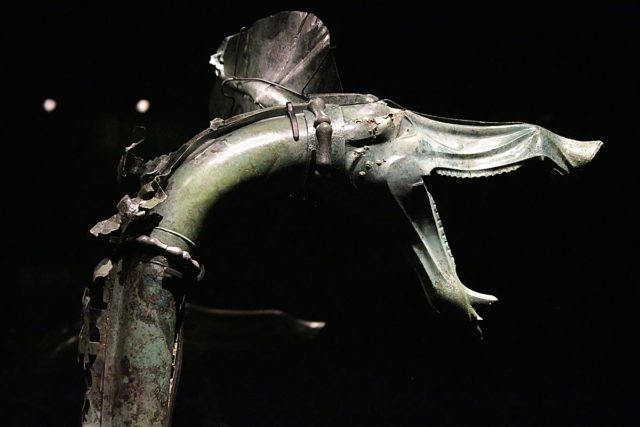
But the Tintignac Carnyx had a completely straight tube that forced experts to re-evaluate the way that this instrument was played.
The structure of the instrument was far less complex than the Deskford Carnyx, and it also produced a different sound, which showed that there were different types of carnyces in existence.It remains as one of a wide variety of wonderful ceremonial and war trumpets produced in Iron Age Europe.
